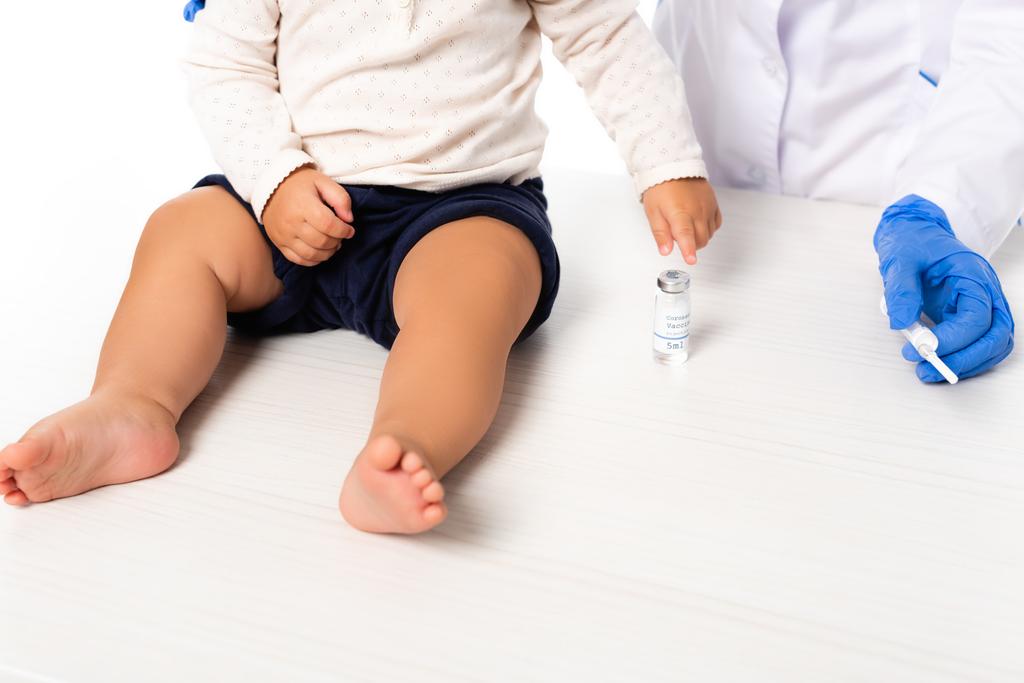Diapering is a fundamental aspect of caring for your baby, and it’s a skill that parents quickly become experts in. In this guide, we’ll delve into the essentials of diapering, covering what to pack in your baby’s diaper bag and providing valuable insights into preventing and treating diaper rash.
Diapering Basics: The Essentials
Before we dive into the nitty-gritty of diapering, let’s cover the basics. Here’s what you need to know:
- Types of Diapers:
- Disposable Diapers: Convenient and widely used, disposable diapers are designed for one-time use and are easily disposed of after each diaper change.
- Cloth Diapers: Reusable cloth diapers are an eco-friendly option. They come in various styles, including prefolds, flats, and pocket diapers, offering flexibility based on your preferences.
- Diaper Changing Stations:
- Designate a comfortable and safe area for diaper changes. This could be a changing table or a mat on a secure surface.
- Keep all your diapering supplies within arm’s reach to ensure you have everything you need.
- Diaper Changing Essentials:
- Diapers: Have an ample supply of diapers on hand, considering your baby’s age and how often they need changes.
- Wipes: Choose baby wipes that are gentle on the skin. Fragrance-free options are often preferred to minimize the risk of irritation.
- Diaper Cream or Ointment: An essential for preventing and treating diaper rash.
- Changing Mat or Pad: Protect surfaces from any unexpected messes during diaper changes.
Packing the Perfect Diaper Bag: Be Prepared for Anything!
Your diaper bag is your go-to arsenal for on-the-go diapering. Here’s what to pack:
- Diapers:
- Pack more diapers than you think you’ll need, especially for longer outings. It’s better to be over-prepared.
- Wipes:
- Carry a travel-sized pack of baby wipes. These come in handy for quick clean-ups on the go.
- Changing Mat:
- A compact changing mat ensures you have a clean and comfortable surface for diaper changes, whether you’re in a public restroom or a friend’s house.
- Diaper Cream:
- Include a small tube or container of diaper cream to address any signs of diaper rash.
- Disposable Bags:
- These come in handy for discreetly disposing of dirty diapers when you’re not near a trash can.
- Extra Outfit:
- Accidents happen, and having a spare set of clothes for your baby can save the day.
- Hand Sanitizer:
- Maintain good hygiene by including a small bottle of hand sanitizer for yourself.
- Feeding Supplies:
- If your baby is bottle-fed, pack extra bottles and formula. Breastfeeding? Ensure you have any necessary accessories like nursing pads.
- Toys or Distractions:
- For older babies, a small toy or teething ring can make diaper changes more enjoyable.
- Emergency Supplies:
- Consider including basic first aid items like band-aids and a thermometer in case of unexpected needs.
Preventing and Treating Diaper Rash: A Parent’s Guide
Diaper rash is a common concern for parents, but with the right knowledge, it can be effectively prevented and treated. Here’s what you need to know:
- Causes of Diaper Rash:
- Prolonged exposure to wet or soiled diapers is a primary cause of diaper rash.
- Sensitivity to certain diaper brands, wipes, or laundry detergents can contribute to skin irritation.
- Preventive Measures:
- Change diapers frequently to keep the diaper area clean and dry.
- Use a barrier cream or ointment during each diaper change to create a protective layer on the skin.
- Allow your baby’s bottom to air-dry for a few minutes before putting on a new diaper.
- Choosing the Right Diapers and Wipes:
- Opt for diapers and wipes that are free from fragrances and harsh chemicals to minimize the risk of irritation.
- Diaper-Free Time:
- Give your baby some diaper-free time each day to let their skin breathe. Lay them on a waterproof mat or towel to minimize mess.
- Gentle Cleansing:
- When wiping, be gentle. Avoid excessive rubbing, and use a soft cloth or baby wipes designed for sensitive skin.
- Diaper Rash Creams:
- If your baby develops diaper rash, choose a diaper cream with zinc oxide or petroleum jelly. These can help soothe and protect the skin.
- Consulting a Pediatrician:
- If diaper rash persists or worsens, consult your pediatrician. It could be a sign of a yeast infection or other underlying issue.
- Reviewing Diet:
- For babies on solid foods, certain acidic or spicy foods can contribute to diaper rash. Pay attention to your baby’s diet and make adjustments if necessary.
Remember, every baby is unique, and what works for one may not work for another. Be attentive to your baby’s cues and adjust your diapering routine accordingly.
Conclusion: Mastering the Art of Diapering
Diapering is an essential aspect of parenthood, and with the right knowledge and preparation, it becomes a seamless part of your daily routine. From choosing the right diapers and packing the perfect diaper bag to preventing and treating diaper rash, you now have a comprehensive guide to navigate the world of diapering with confidence. Embrace the journey, enjoy the sweet moments, and keep those diapering essentials at the ready!










